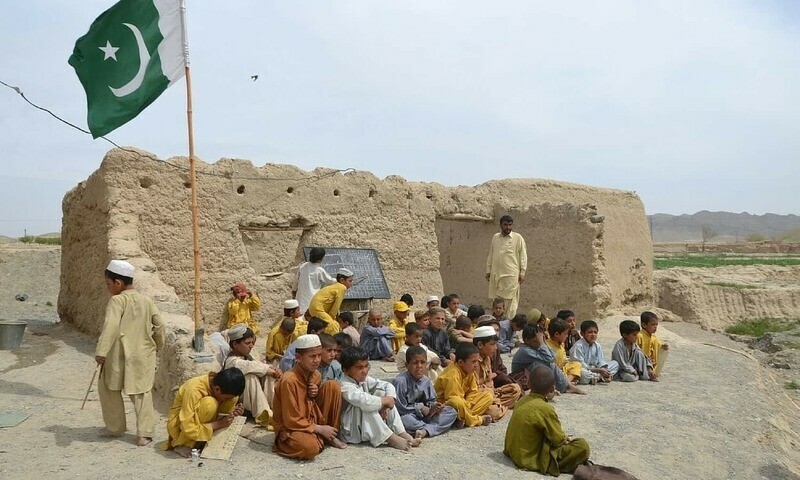Balochistan, Pakistan’s largest province by area, has experienced boundless demographic changes over the past seven decades.
From a modest population of just over one million in 1951 to nearly 15m in 2023, the province’s growth tells a story of transformation driven by health advancements, infrastructural development, migration, and socioeconomic shifts.
Moreover, it is important to provide an insightful analysis to the political leadership and policymakers, who still believe rapid population growth is not an issue in Balochistan. If this trend continues, there will arise serious social and economic challenges in the water-stressed region.
The census data for Balochistan, spanning from 1951 to 2023, illustrates significant demographic shifts and a remarkable population increase over the decades. According to the Census Reports (1951-2023), in 1951, the population stood at 1.17m. By 1961, it had grown modestly to 1.35m, with an average annual growth rate of 1.5 per cent. A pronounced surge followed between 1961 and 1972, as the population climbed to 2.43m at an accelerated growth rate of 5.16pc. This rapid increase can likely be attributed to improvements in healthcare, declining mortality rates, and, especially, high fertility levels.
The most dramatic population growth occurred between 1972 and 1981, when the population nearly doubled to 4.33m, marking an unprecedented annual growth rate of 7.09pc. This period of expansion coincided with socioeconomic developments, enhanced health services, and migration into the region. But the causal relationship must be authenticated through a proper research study to determine the real factors behind this all-exponential growth.
Political leaders and policymakers must recognise that unchecked population growth is a pressing issue, especially in water-stressed Balochistan
After 1981, population growth began to slow. By 1998, the population had reached 6.57m, with the growth rate tapering to 2.47pc. This decline reflects the impact of family planning initiatives and shifting fertility patterns, as well as huge investments in maternal and newborn child health.
Between 1998 and 2017, the population nearly doubled again, reaching 12.34m, with a moderate growth rate of 3.37pc. As of 2023, the population stands at 14.89m, with the growth rate further reduced to 3.2pc, signalling a more stabilised demographic trend, yet more is needed to bring it down to achieve population stabilisation.
The historical data underscores both the explosive population growth in Balochistan and the effects of recent stabilisation efforts. Although growth rates have decreased in recent decades, the current rate — still above 3pc — presents challenges for the region. This unbridled growth may result in food insecurity, environmental degradation, poor living conditions, loss of biodiversity, greenhouse gas emissions, and water and soil contamination.
Moreover, the youth mainly look for job opportunities in the government, while limited growth in the private sector and industrial development restricts employment options. The increasing population puts additional pressure on available resources, making it harder to meet the demand for jobs.
In light of recent trends and analyses, adopting a robust public policy framework is imperative to address the growing imbalance between population growth and available resources. Reducing the current growth rate from 3.2pc to below 2pc is critical for sustainable development.
That said, the following key policy changes may prove beneficial: The National Finance Commission (NFC) resource distribution, currently 82pc population-based under the 7th NFC award, should be delinked from the population criteria.
Similarly, the allocation of national and provincial assembly seats should not solely depend on population figures. This decision requires federal-level intervention, facilitated through dialogue among the federal government and the provinces.
Strong collaboration between the health and population welfare departments is essential at the policy level. At the service delivery level, integration should be achieved by merging Population Welfare Department outlets into primary and secondary healthcare facilities. This integration will help bridge the gap between the demand and supply of family planning services.
Furthermore, the allocation for the Population Welfare Department in Balochistan’s provincial budget for contraceptives — Rs120m in 2023-24 — is grossly insufficient. This allocation must be significantly enhanced to ensure the availability of contraceptives and family planning medicines at tertiary, secondary, and primary health facilities, including supplies for Lady Health Workers, along with adequate funding for Postpartum Family Planning Strategy.
The Health Department of Balochistan should prioritise maternal, newborn, and child health, immunisation, nutrition, and reproductive health services. A unified plan is needed to integrate preventive healthcare programmes under one umbrella, with resources diverted to strengthen primary healthcare infrastructure.
While the province’s vast landmass and natural resources may seem abundant, it is a water-stressed region where, in over 70pc of areas, groundwater resources have already been depleted to critical levels. Therefore, it is high time for population growth to be sustainable.
The writer is a provincial civil servant, currently posted as secretary of population, Balochistan.
Published in Dawn, The Business and Finance Weekly, March 10th, 2025


